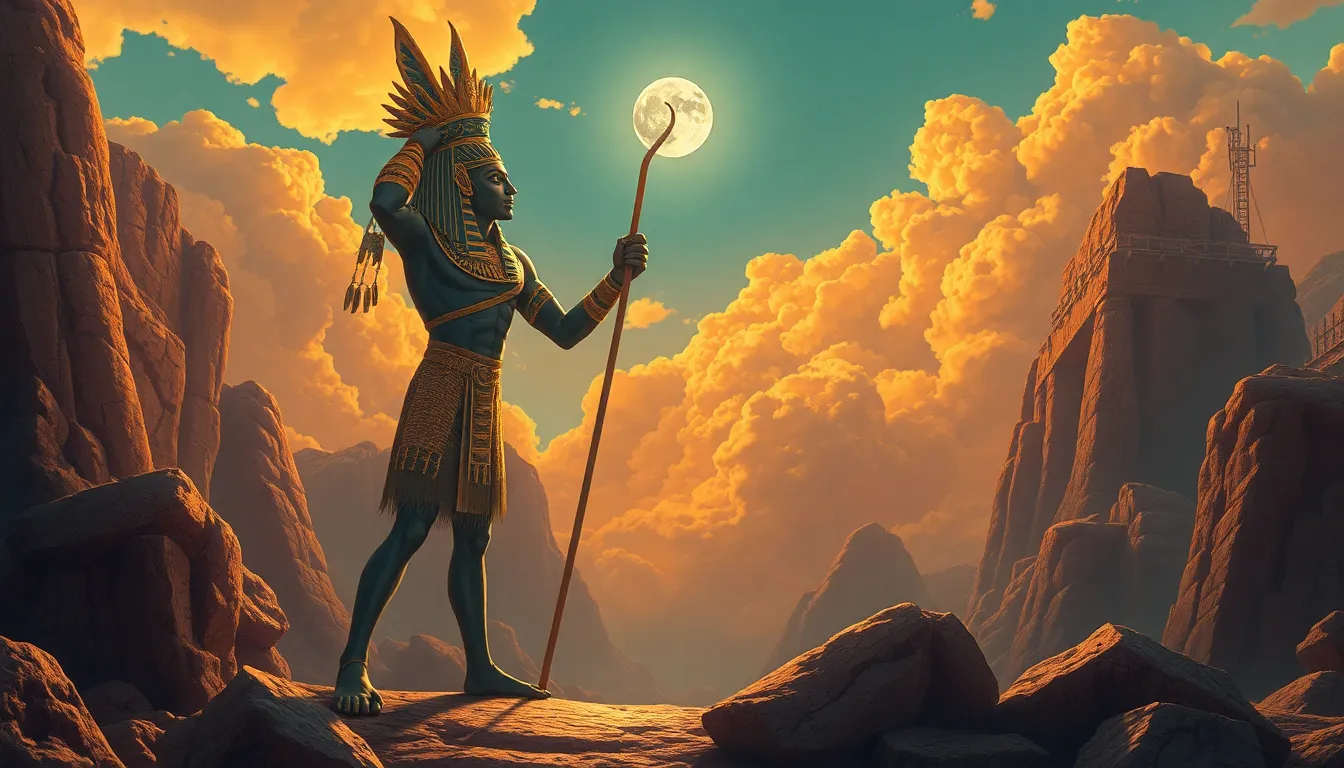The Myths of Geb and Nut: The Earth and Sky
I. Introduction
In Ancient Egyptian mythology, Geb and Nut stand as powerful symbols of the Earth and Sky, respectively. Their tales are intricately woven into the fabric of Egyptian cosmology, reflecting the ancient civilization’s understanding of the natural world and its mysteries. Geb, the god of the Earth, and Nut, the goddess of the Sky, embody the duality and harmony of the universe, representing the essential relationship between the terrestrial and celestial realms.
This article aims to explore the myths surrounding Geb and Nut, their origins, the significance of their relationship, and their lasting legacy in both ancient and contemporary culture.
II. The Origins of Geb and Nut
The creation myths surrounding Geb and Nut are foundational to Egyptian cosmology. According to these myths, the universe originated from the primordial waters known as Nu. From this chaos, the first deities emerged. Geb and Nut were born from the union of the primordial elements, representing the solid ground and the vast expanse of the sky.
Geb, often depicted as a man lying on the ground, symbolizes stability and fertility. Nut, on the other hand, is portrayed as a woman arched over Geb, her body adorned with stars, representing the heavens. Their birth and roles signify the separation of Earth and Sky, a crucial event in the formation of the world.
III. The Relationship Between Geb and Nut
The relationship between Geb and Nut is one of profound connection and separation. They are often depicted in a romantic light, emphasizing their bond despite the vastness that separates them. Nut arches over Geb, forming a protective canopy that shelters the Earth. This act symbolizes the nurturing aspect of the sky, providing life-giving rains and sunlight essential for growth.
However, their relationship is also marked by conflict. The ancient myths describe how Geb and Nut were once inseparable, tightly entwined. Yet, the sun god Ra intervened, forcing Nut to separate from Geb, which created the space for the natural order of the universe. This separation highlights the balance between unity and individuality, a theme prevalent in many cultures.
IV. The Role of Geb and Nut in Egyptian Cosmology
In Egyptian cosmology, Geb and Nut play integral roles in the cycle of life. Geb, as the god of the Earth, is associated with agriculture and fertility. He is often depicted with green vegetation, symbolizing abundance and growth. His influence is seen in the rich harvests that sustain the people of Egypt.
Nut, as the goddess of the Sky, encompasses the celestial bodies. Her domain includes the stars, moon, and sun, which are crucial for navigation and timekeeping. Together, Geb and Nut’s roles emphasize the interconnectedness of nature, where the Earth supports life while the Sky nurtures it with essential elements.
V. Myths and Legends Involving Geb and Nut
The myths of Geb and Nut are rich with stories that illustrate their significance in Egyptian culture. One notable story is the tale of their love and the birth of their children, known as the Ennead, which includes powerful deities such as Osiris, Isis, Seth, and Nephthys. Their union reflects the cycle of life and death, as their children play pivotal roles in various myths concerning resurrection and the afterlife.
Another captivating narrative involves a conflict with Ra, the sun god. Ra, concerned about the darkness caused by Nut’s nightly journey across the sky, sought to limit her power. As a consequence, Nut was cursed to give birth to no children during the days of the year. However, through cleverness and defiance, Nut managed to give birth to five children, demonstrating her resilience and the enduring power of life.
Other notable myths feature Geb and Nut in various roles, often highlighting themes of creation, love, and the cyclical nature of existence.
VI. Interpretations and Symbolism of Geb and Nut
In Ancient Egyptian society, Geb and Nut held significant cultural importance. They were revered not only as deities but also as representations of the essential aspects of life. Their myths conveyed moral and ethical lessons, emphasizing balance in nature and the significance of family ties.
Artistic representations of Geb and Nut are abundant, often showcased in tomb paintings and temple carvings. Geb is typically depicted as a green figure, while Nut is shown as a starry sky, symbolizing their domains. These images serve as a reminder of the divine order governing the universe.
In modern interpretations, Geb and Nut represent the duality of existence, the balance between opposing forces, and the interconnectedness of all life. Their stories resonate with contemporary themes of environmentalism and the importance of preserving the natural world.
VII. The Legacy of Geb and Nut in Contemporary Culture
The influence of Geb and Nut extends beyond ancient times, permeating literature, art, and spirituality. Their myths have inspired countless writers, artists, and scholars, who draw on their themes of love, separation, and the natural cycles of life.
In modern spirituality, Geb and Nut are often invoked in practices that honor the Earth and Sky, symbolizing the unity of body and spirit. Their enduring fascination reflects humanity’s ongoing quest to understand the universe and our place within it.
VIII. Conclusion
In summary, Geb and Nut are essential figures in Ancient Egyptian mythology, representing the Earth and Sky, respectively. Their stories are rich with symbolism, illustrating the balance between opposing forces and the interconnectedness of life. The enduring myths of Geb and Nut invite us to reflect on our own relationships with nature and the cosmos.
As we continue to explore the depths of Ancient Egyptian mythology, the tales of Geb and Nut remind us of the timeless themes that resonate across cultures and generations.




